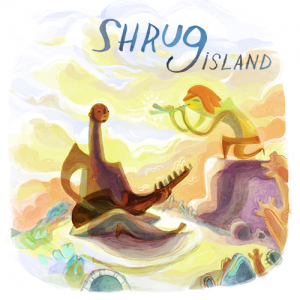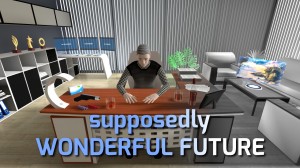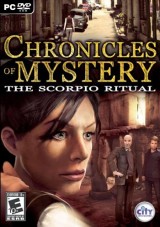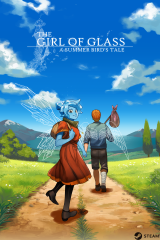Review for Sagebrush
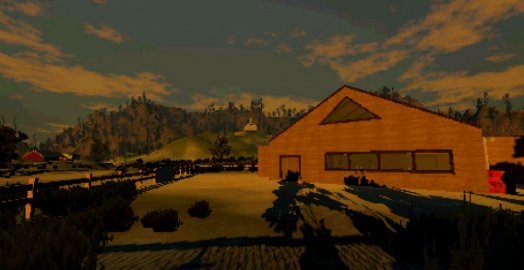
Game information
Recalling the worst horrors of real-life cults, Sagebrush has players sifting through the aftermath of mass suicide. Though not based on any specific tragedy, this heavy subject is broached with sincerity and respect. Indie developer Redact Games’ debut “lo-fi” exploration-driven title posits that we all have an emptiness that begs to be filled – a nebulous sense of purpose that pulls with an almost gravitational force. In desperation, and often to overcome pain, a person might find fulfillment through questionable means, e.g. the clutches of a cult. Not so brash as to declare right from wrong, the game allows players their own conclusions about what they discover. It may be light on actual gameplay, but the themes themselves are challenging enough, taking us someplace uniquely solemn among first-person narrative adventures.
Years have passed at the compound where the fictional cult “Perfect Heaven” made its home until 1993, but it still contains the memories of its former inhabitants. You assume the role of an unidentified character with no explicit goal apart from investigating the notes and possessions left behind in the abandoned structures that dot the New Mexico desert terrain. Landmarks include a community hall, rectory, chapel, school, farm, cramped trailers, and the ominous “cleansing rooms.” The freedom to roam is mostly an illusion, however, as this is predominantly a guided tour, with most locations locked off until keys are found. Think Gone Home, with fewer objects to fiddle with and more restrictions on exploration.
At the outset, you are tasked with cutting through a chain link fence, and this continues into a series of similarly simple objectives. Find a key to turn on a generator, use a shovel along with a described location to uncover a buried key, chop through a barrier by axe to reveal… another key. Turns out your inventory consists mainly of keys. Offering some slight variation, you will also need to deduce a couple combinations for locks. It’s not the most ambitious experience in scope, but it successfully fuels an ongoing curiosity to learn more about the workings of the cult and the lives of its former members.
The premise is unusual for this medium, being that cults are usually portrayed as evil with little to no further examination. In answer to this, the characters here are elaborated via their individual reasons for joining the flock, whether due to doubts about religious beliefs, escaping an abusive marriage, or just from feeling lost in the shuffle of modern society. Many of the cultists found genuine fulfillment at the compound, but others, such as Lilian, developed quiet suspicions regarding the motives of their leader. It quickly becomes evident that she had broken free of the cult before its dreadful demise, and thus lies the major arc of the story. Much of the evidence you uncover relates to the particulars behind her flight and eventually what became of her. Following this trail and reconstructing events like a detective is the allure here, and the payoff is a very thoughtful conclusion.
The cult leader, referred to simply as Father James, is revealed to have admonished the sins of others while refusing to recognize his own. Yet it seems that he also suffered from the same gnawing emptiness, which invited delusions that lead to the creation of his own spin-off religion. He claimed that an angel calling itself Sariel came to him speaking the word of God, proclaiming that James was chosen to guide the wayward. The game certainly does not victimize the man or absolve him of the abhorrent acts he committed, but it opens a window into his sick mind to at least suggest some explanations. Even as James became more paranoid and merciless, perhaps the well-being of his charge truly did mean something to him.
Sagebrush features the now-common audio recordings as one method to convey its story. With these scratchy tapes serving as hazy memories, Lilian recounts her involvement with the group and James rambles narcissistically to prepare his speeches. You may wonder why all the notes and tapes weren’t confiscated as evidence, but it eventually makes sense when the final segment of the game deconstructs the narrative in a decidedly abstract way. Rest assured, the shift doesn’t make it any less grounded.
Exhibiting a clear understanding of the subject matter, the writing is purposeful, knowing exactly what it wants to say and wasting no time in saying it, resulting in an experience that is comparable in length to a movie. The story is a puzzle, its pieces strewn, ready to be gathered and made sense of. Slotted together, it becomes a dark examination of compliance and belief, but a neutral stance is maintained throughout, like an interactive documentary.
There is a rawness in the presentation that provokes a sense of unease. The voice of James is peculiarly deadpan, while Lilian displays a cold weariness. Although the characters necessitate some degree of detachment by design, line delivery can be overly stiff and awkward. Not to the extent of being embarrassing, but unmistakably amateur. Excluding the voice-overs, you’ll spend a major chunk of the game’s duration in silence, the most prevalent sound being that of your lonely footsteps on assorted surfaces. The few music tracks that arise are enjoyably distinct, jumping between retro-inspired synth, elated melody, a bit of dissonance, and even a religious hymn.
Drenched in pixels and aliasing, the deliberately lo-fi graphics are attractive, whether because they elicit nostalgia for the earliest days of 3D, or because they suitably reflect the murkiness of the story. Probably both. The way the beam of your flashlight cascades across the ripples of uneven ground is particularly pleasing. In conjunction with the understated audio, the mood is palpably melancholic, to the point that the empty rooms and arid stretch of desert around the compound made me a little uneasy. With its isolated setting and slow progression from vivid sunset to moonlit night, Sagebrush demonstrates the eerie tone of a horror game without any monsters or actual frights.
When first applicable, onscreen prompts act as a tutorial to direct you through the controls. I don’t recall being informed how to run, but there is a run button and you will find it useful in your travels. Since gameplay is relatively straightforward, you won’t have to worry about a stamina bar or even batteries for your flashlight. Pick whichever peripheral you prefer, mouse and keyboard or gamepad, as both work reliably.
With a story that is perhaps not as robust as it could have been, Sagebrush practices restraint in its ambition, but in doing so it succeeds in being precisely what it aims to be – an exploration of cult mentality within a tightly structured framework, presented with modest but skillful execution and polish. Borrowing much from its exploration-driven peers, it doesn’t reinvent the wheel, but it never aspires to. Instead, it's content being a brief, relatively puzzle-free voyage whose real challenge is in piecing together the troubled lives of people yearning for purpose, and maybe even glimpsing ourselves in their struggle.
Disclaimer: Sagebrush was developed by Nathaniel Berens, a member of Adventure Gamers staff. In order to ensure neutrality, he was in no way involved in any aspect of this review, nor was the reviewer aware that a colleague had produced the game.
Our Verdict:
Despite its weighty subject matter, Sagebrush keeps from tipping over with a sophisticated balance between environmental storytelling and eerie desolation.






